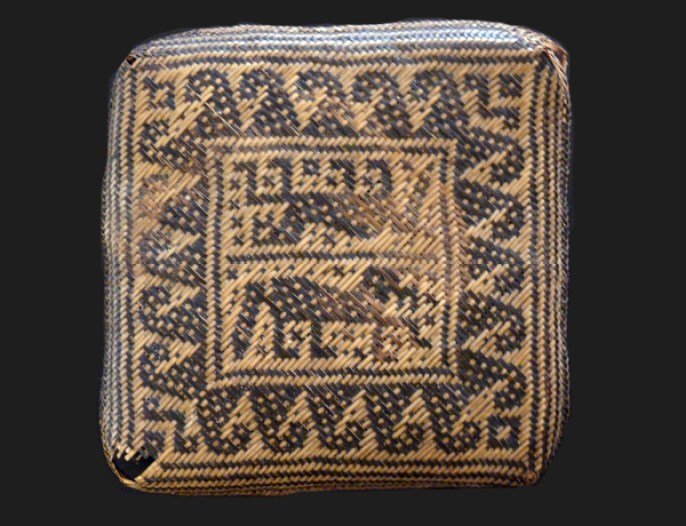Mention of “art” immediately conjures of things that are outside of normal life. Art is something we do when we are not in the business of making a living. It is something that hangs in galleries and museums for visitors to admire when they want to take break from “real life”. But in tribal societies, no real separation between art and life exists. Both are bound by traditions handed down from ancestors. The rituals, traditions and symbols that animate life also animate the creation of art of every form, including utilitarian objects such as boat paddles, spoons and baskets. A selection of tribal basket work is used to demonstrate this point. The takeaway from this little exhibition is that when care in preparation of materials is exercised, even everyday objects can turn into worthy works of art, as beautiful as they are useful.
Gallery of Tribal Baskets




Late 19th/early 20th Century, 11 x 10 cm.
The bird is an ancient symbol of the upper world in both the Austronesian cosmology of Indonesia dating from the 5th Millennium BC, as well as sacred to the Indian beliefs that arrived 1500 years ago. Lombok, where the above basket comes from, is neighbour to the tourist island of Bali.

This lovely object is a basket cover for ritual bowls used in serving rice. Called Tangga Mbola Uhu Manu, it is made from lontar palm fronds. Young lontar leaves are cut into fine strips and then woven into a hat-like cover embellished with three-dimensional images of chickens. Chickens signify new life in many parts of the Indonesian archipelago as the crowing of a rooster in the morning announces the arrival of a new day.


The Akimel O’odham (Pima) River People of Arizona were major basket makers in the late 19th century, primarily making them for their own use. At the turn of the century, basket weaving was being practiced in every home. This continued into the early 20th century, at which time Southwest Indian basketry became a collectible commodity.

